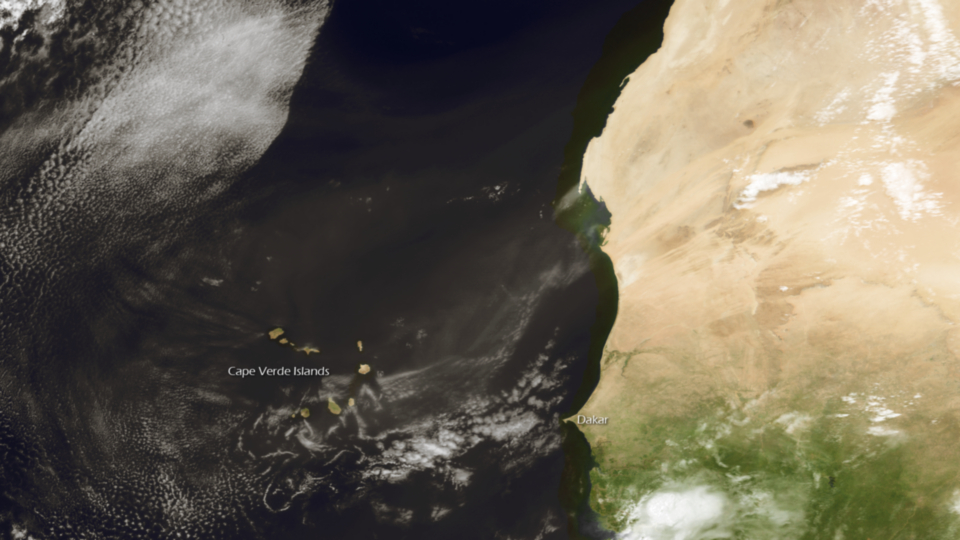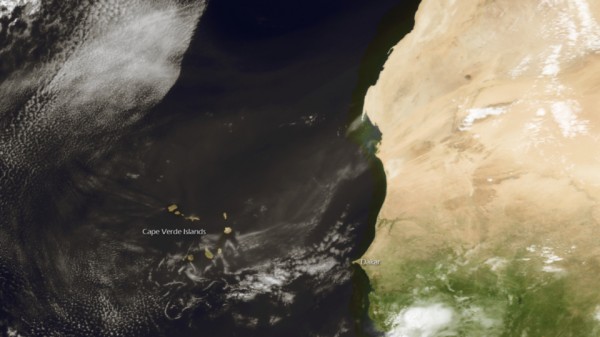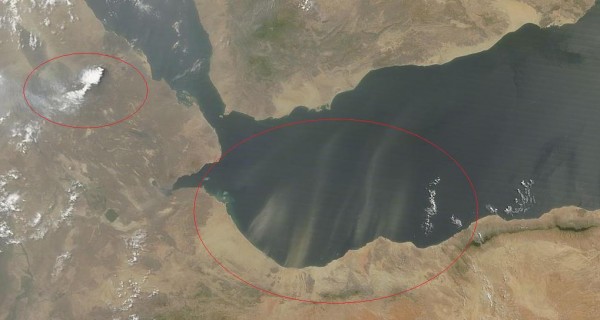Saharan dust drifts west over Atlantic Ocean

A massive Saharan dust plume has drifted west over the Atlantic Ocean and the Cape Verde Islands, located 570 kilometres off the coast of Western Africa.
GOES, a US geostationary weather satellite, captured the below image of the dust Friday. The image presents the fine sand particles as a hazy yellow colour (enhanced) that appears below the white clouds.

According to the National Oceanic and Atmospheric Administration (NOAA): “Dust storms such as this one are quite frequent and play a roll in depressing the formation of tropical waves in the Intertropical Convergence Zone. NOAA’s Atlantic hurricane season outlook last month called for “normal” levels of dust to blow off of the African coast.”
Elsewhere in Africa Friday dust drifted from the northern coast of Somalia over the Gulf of Aden and toward Yemen. This Modis image from midday Friday also shows the continuing eruption of the Nabro volcano in Eritrea. The stratovolcano erupted for the first time in its history on Sunday 12 June 2011. Ash and SO2 emissions from the volcano can be seen drifting over the border into northern Ethiopia.


For years since the 70s I flew Adelaide-Alice Springs-Darwin every month or two. I have seen Lake Eyre full and empty a few times. We had mines at places like Tennant Creek (Google Earth) where smoetimes the desert bloomed after heavy rain. Heavy or widespread rain episodes can cause sheet flooding especially in the braided river systems that feed Lake Eyre through semi desert to the N-E, even rain that falls up to 1,000 km away from L. Eyre. After the shallow flooding, the water evaporates but the mud stays. Fine sediment covers the very top soil surface. This is a large contributor to dust storms. It does not last forever, so there is an optimum time for the wind to make big dust storms like the other day. It has very little to do with agriculture, if anything.The lack of a linkage between global warming and a dust storm like this is shown by the continuation of the dust cloud to New Zealand. After moving about 1,500 km from L Eyre to the East Coast, it then went 2,000 km more to New Zealand over the Tasman Sea. So it is not required for there to be dust on the surface to keep the dust storm going. It can continue over the sea. I guess it would have continued over the sea whether the SST was 1 or 2 or 3 degrees higher than it was.In 1983-4, 2 of us drove west from Kalgoorlie to Perth through an East-moving dust storm, some 550 km as the crow flies. In this case they flew backwards to keep the dust out of their eyes.Don’t you agree that it was a wonderful inspiration to make an early ststement that Global Warming would cause an increase in extreme weather events? Every time something anomalous happens, this now gets trotted out, as if it has something to do with anything.I’ve got to disappear now. There is a big solar panel installation that was in the path of the dust storm and the mirrors are bloody fithy. I’m not going to clean them, I’m going to watch how they clean them without water, possibly rationed because of drought. Welcome, Windex, the Greek man was right.